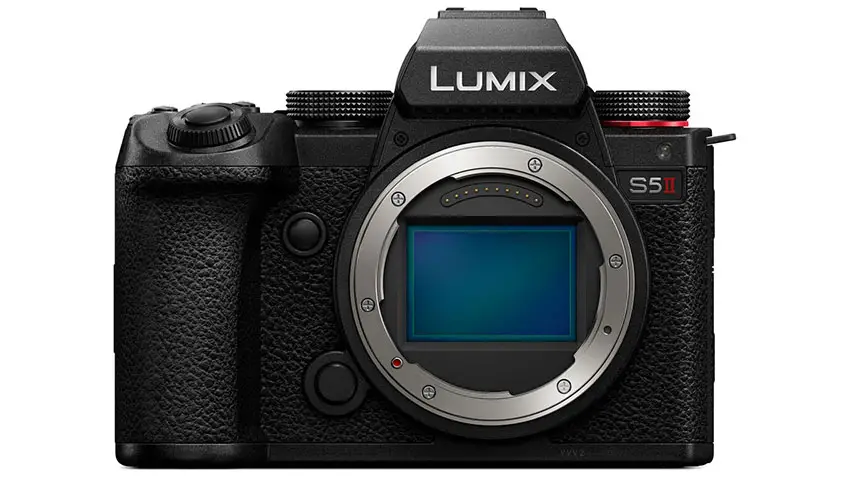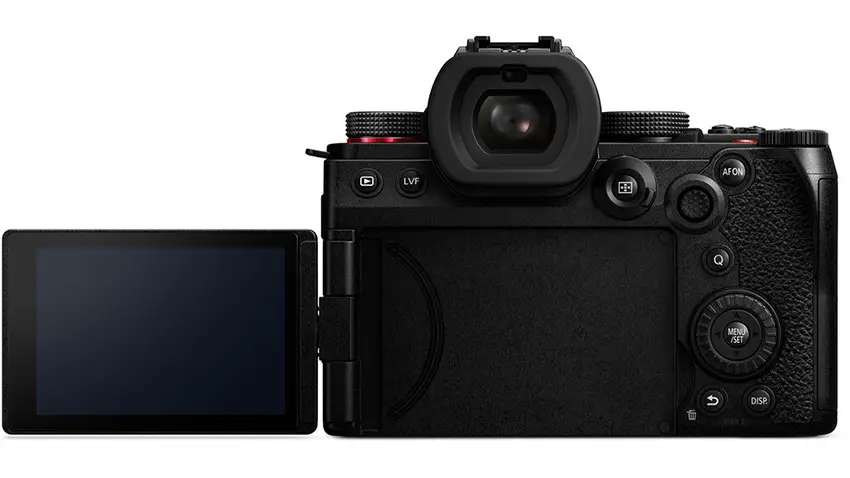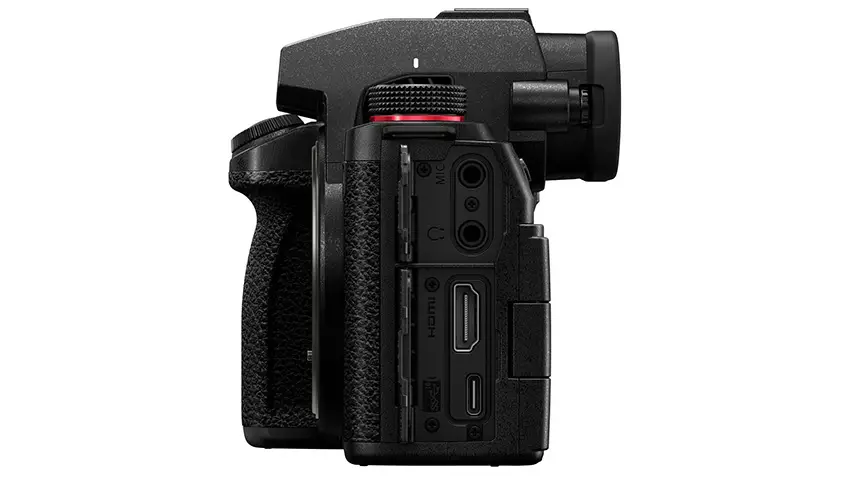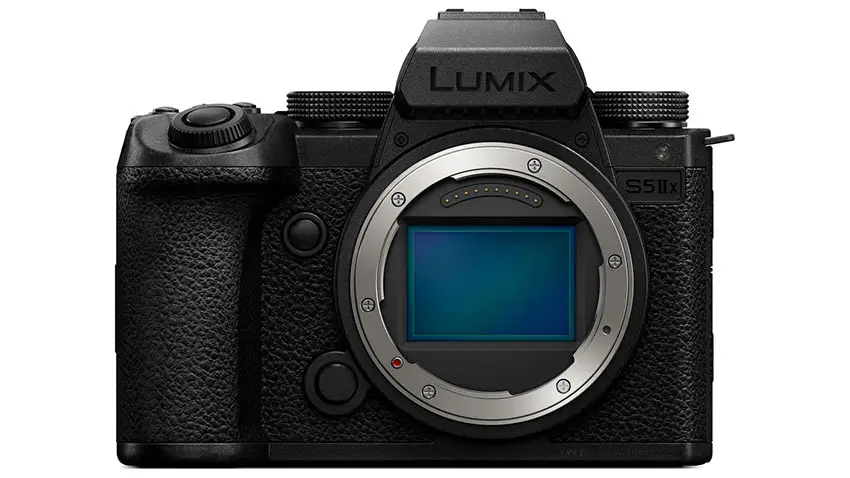Finally! After many years and multiple lineups of mirrorless cameras, Panasonic has their first camera with phase-detect autofocus – the Lumix S5 II.
An upgraded mid-range full-frame mirrorless isn’t usually the first camera to get a huge new feature for a brand, but it does mean that it is something that many people might actually pick it up.
For a closer look, ProAV TV does their usual hands-on testing with a particular focus on the AF system and image quality.
There is also a mention of the added features packed into the upcoming S5 IIX, an even more video-focused version of this camera.
This camera is a serious upgrade from the original and with all the new tech it has it is among their best.
Early S Series releases were good, but they didn’t quite hit the same highs as the GH Series did in its heyday. The S5 II is looking like it just might be a return to form for Panasonic.
Value is among the biggest selling points here as it upped the game in the specs and features department while retaining that sub-$2,000 price point.
Phase-Detect AF System
Perhaps the biggest failing of Panasonic cameras over the years has been sticking with contrast-detect autofocus.
While it was the best contrast system you could get, it was so far behind modest phase-detect options. Now you have both in a hybrid system.

Image Credit: Panasonic
In a simple test of a subject sitting down and moving forwards and backwards you can immediately see how much more confident and reliable the S5 II is with autofocus.
Benefits will come to the V-Log profile since the lower contrast option had drawbacks in autofocus compared to others on the original S5. The S5 II is much more responsive.
ProAV TV believes that the S5 II has an autofocus system you can rely on for professional video work.
Image Quality
Inside the camera is where you will find the main upgrades: a brand-new image sensor and processing engine.
The sensor boasts 14+ stops of dynamic range and has a dual native ISO setup. In V-Log you’ll find the ISOs are 640 and 4000 while in a standard profile it is 100 and 640.
V-Log here is full and not the “L” version found on some of Panasonic’s mirrorless option. Alongside that is the full V-Gamut color space.

Image Credit: Panasonic
Looking at some comparisons between the new model and the last you will see a different color rendering. The S5 II has warmer and much more pleasing skin tones. It also has a higher resolution option at 5.9K vs being limited to 4K on the original.
Dynamic range appears to be similar in the highlights as they both started to break when reaching 5 or more stops overexposed.
Heading into the shadows you’ll find the original desaturates more quickly and heads magenta while the Mark II retains its color but picks up strong green noise.
Codecs are different in this test with the original S5 working in a 4:2:2 H.264 format and the S5 II using 4:2:0 H.265.
For general underexposure the S5 II seems to be better since it keeps the color. Beyond a couple stops though both are getting to unusable.
High ISO Tests
Comparing the S5 II with the original in high ISO tests does reveal some small changes. Up until about ISO 12800 you’ll see practically no difference. However, at ISO 25600 you’ll see the original start to lose some color while the S5 II keeps its color consistent.
Resolutions
Panasonic unlocked the S5 II a bit as it can now record up to 5.9K using the full width of the image sensor in DCI, UHD, and 3:2 aspect ratios. This should make things a lot more flexible in post.
Standard DCI and UHD 4K options are available using the full width at up to 30p or in APS-C mode you can record 4K at up to 60p. Full HD can reach 120p.
In the tests the S5 II’s 6K mode was sharper and more detailed than the 4K options. Interestingly, the 4K mode on the original S5 appeared to be slightly sharper than the S5 II’s 4K.
The recommendation is to just use the 6K mode since the internal recording formats are not going to dramatically increase file size and there is a noticeable advantage in image quality.
Everything except for the 6K modes can record in 4:2:2 10-bit (6K is limited to 4:2:0 10-bit). The 4:2:0 options will move you to H.265 while 4:2:2 will get you H.264.
They have the same data rates regardless of codec. So, the argument would be that the H.265 might have better quality since it is more efficient even though it doesn’t have the same color data.

Image Credit: Panasonic
Body Design
A great move from Panasonic was to add a “hidden” fan to the S5 II. Compared to the super obvious venting of cameras like the S1H, the S5 II has vents at the top of the camera around the viewfinder. It results in a slimmer camera design.
A new image stabilization algorithm called Active I.S. will provide better handheld stabilization while walking handheld. It’s supposed to be about 200% better.
Users can now load in up to 10 custom LUTs and use them as a view assist or burn them in with real-time LUT setting. This can help speed up certain workflows.
The screen remains the same but the EVF gets a resolution bump to 3.6m-dot.
The HDMI port has been moved up to full size and will be able to output raw video via a future firmware update (and paid upgrade).
Media is still two SD card slots though they are both UHS-II speed.
Audio is similar with an upgrade if you use the XLR Adapter which will now deliver 4-channel audio, just like the GH6.
S5 IIX Variant
Here’s the real news. Panasonic is making a more video-focused variant called the S5 IIX. For about $200 more you can get an all-black version that comes loaded with additional video features.

Image Credit: Panasonic
Available in May, the S5 IIX has a list of features:
- Built-in raw output (no need for paid license)
- All-I and ProRes formats
- USB-SSD recording
- Enhanced streaming options
It’s going to be a tough call for filmmakers looking for a camera today. The S5 IIX is objectively better, though it’ll be a bit of a wait. I’d say try to wait if you plan on shooting serious video.
What do you think of the Panasonic S5 II series?
[source: ProAV TV]
Order Links:
- Panasonic Lumix S5 II Mirrorless Camera (B&H)
- Panasonic Lumix S5 IIX Mirrorless Camera (B&H)
- Panasonic DMW-SFU2 Firmware Upgrade (B&H)
- Panasonic DMW-XLR1 XLR Microphone Adapter (B&H, Amazon)
Disclaimer: As an Amazon Associate partner and participant in B&H and Adorama Affiliate programmes, we earn a small comission from each purchase made through the affiliate links listed above at no additional cost to you.


